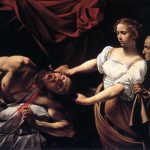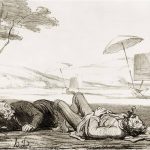11 September 2019 – AGM + Lecture: Last Supper in Pompeii
For the Romans, life meant getting together to eat and drink, in a pub or at a banquet. Last supper in Pompeii celebrates the Roman love affair with food and drink – a journey, from fields and vineyards to markets and shops, from tables to toilets and the tomb.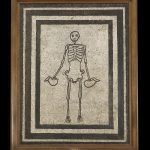
We see the influence of the Greeks and mysterious Etruscans, and visit fertile Vesuvius to see how Romans got their food and drink (and a Roman vineyard buried in AD79!). Into the bustling city, past hawkers, shops and bars we enter the house, visit the shrine of the gods (with a chicken head!) and the gorgeous garden with its flowers and fountains. We recline in the dining room, with exotic food and fine wine, and surrounded by Greek-style luxury – fine silver, mosaics and frescoes.
Dare we see the kitchen? No fridge, no running water, no hygiene – and there is the toilet, feeding into a cess pit below. Escape to Roman Britain with objects from sleepy Chedworth and metropolitan London with the first brewer, the first cooper and even the first pub landlord! Finally we see the monuments of the dead feasting into the afterlife. Seize the day – Carpe diem!!
 Lecturer: Dr Paul Roberts is the Sackler Keeper of Antiquities at the Ashmolean Museum of Art and Archaeology, Oxford University.
Lecturer: Dr Paul Roberts is the Sackler Keeper of Antiquities at the Ashmolean Museum of Art and Archaeology, Oxford University.
He studied at the Universities of Cambridge, Sheffield and Oxford and lived in Italy for several years, in Milan, Rome and Naples. He has excavated in Britain, Greece, Libya, Turkey and in particular Italy, where he directs excavations in the Sabine hills near Rome and near Campobasso in Molise. His research focuses on the day-to-day lives of ordinary people in the Greek and Roman worlds. and he has written books on Roman daily life, Roman Emperors, and Roman art.
From 1994 and 2014 he was Roman Curator in the Department of Greece and Rome at the British Museum, where he curated the exhibition ‘Life and Death in Pompeii and Herculaneum’ (2013). At the Ashmolean he co-curated the exhibition ‘Storms, War and Shipwrecks: Sicily and the Sea’ (June-September 2016) telling the history of Sicily through shipwreck finds around the island. He is now working on ‘Last Supper in Pompeii’ an exhibition for the Ashmolean that tells the story of the ancient Roman love affair with food and drink (July 2019 – January 2020).
9 October 2019 – Italian masters: de-coding da Vinci
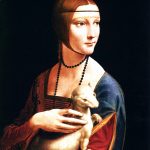 Leonardo da Vinci 1452-1519: “the idea is everything”. Leonardo died 500 years ago and his work remains enigmatic, potent and mystifying. Much of his work is unfinished; his Last Supper in Milan was the target of jokes and vandalism by occupying French forces, he was among the first to celebrate human imperfection in his caricatures, and just what is the draw of his famous Mona Lisa? Alice Foster revises the familiar and explores some of the less well known of Leonardo’s works.
Leonardo da Vinci 1452-1519: “the idea is everything”. Leonardo died 500 years ago and his work remains enigmatic, potent and mystifying. Much of his work is unfinished; his Last Supper in Milan was the target of jokes and vandalism by occupying French forces, he was among the first to celebrate human imperfection in his caricatures, and just what is the draw of his famous Mona Lisa? Alice Foster revises the familiar and explores some of the less well known of Leonardo’s works.
 Lecturer: Alice Foster has lectured for Oxford University Department of Continuing Education since 1998. She lectures regularly at the Ashmolean Museum, Oxford, and at the Oxfordshire Museum in Woodstock. Her busy freelance career includes organising History of Art study days with colleagues, and regular weekly classes in Oxfordshire and Worcestershire. In 2004 Alice joined The Arts Society and has lectured in Britain and in Europe. Since 2003 Alice has been a tutor on study holidays. In 2010 she was elected President of Banbury Fine Arts Society.
Lecturer: Alice Foster has lectured for Oxford University Department of Continuing Education since 1998. She lectures regularly at the Ashmolean Museum, Oxford, and at the Oxfordshire Museum in Woodstock. Her busy freelance career includes organising History of Art study days with colleagues, and regular weekly classes in Oxfordshire and Worcestershire. In 2004 Alice joined The Arts Society and has lectured in Britain and in Europe. Since 2003 Alice has been a tutor on study holidays. In 2010 she was elected President of Banbury Fine Arts Society.
13 November 2019 – Anthony Gormley: a body of work
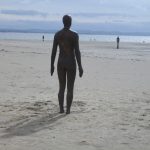 Antony Gormley’s career spans nearly 40 years, during which time he has made sculpture that explores the relationship of the human body to space, often using his own body as his starting point. His work has been shown throughout the world, in galleries including the Tate in London and the Hermitage in St Petersburg, but is also often on open display, as public art, such as Another Place at Crosby Beach, near Liverpool. As well as works that he is well known for, like the iconic Angel of the North, this lecture will look at some of his earlier and less well-known works, to give an overall view of the development of his work across his whole career, up to the present time
Antony Gormley’s career spans nearly 40 years, during which time he has made sculpture that explores the relationship of the human body to space, often using his own body as his starting point. His work has been shown throughout the world, in galleries including the Tate in London and the Hermitage in St Petersburg, but is also often on open display, as public art, such as Another Place at Crosby Beach, near Liverpool. As well as works that he is well known for, like the iconic Angel of the North, this lecture will look at some of his earlier and less well-known works, to give an overall view of the development of his work across his whole career, up to the present time
 Lecturer: Rosalind Whyte has a BA and MA from Goldsmith’s College, and an MA (distinction) from Birkbeck College. She is an experienced guide at Tate Britain, Tate Modern, the Royal Academy and Greenwich. She gives lectures at the Tate and the Dulwich Picture Gallery as well as to independent art societies and on cruises. She also leads art appreciation holidays.
Lecturer: Rosalind Whyte has a BA and MA from Goldsmith’s College, and an MA (distinction) from Birkbeck College. She is an experienced guide at Tate Britain, Tate Modern, the Royal Academy and Greenwich. She gives lectures at the Tate and the Dulwich Picture Gallery as well as to independent art societies and on cruises. She also leads art appreciation holidays.
11 December 2019 – Caravaggio and his models
Caravaggio is known for his adherence to reality, but how did he weave the real lives of his models into his paintings? What became of Fillide Melandroni, courtesan to cardinals, the star of Caravaggio’s ‘Judith and Holofernes’, who was under the control of pimp Ranuccio Tomassoni whom Caravaggio murdered? Why did Caravaggio choose Fillide’s friend, street prostitute Anna, for the penitent Magdalene? What role did fellow artist Mario Minniti play in Caravaggio’s works?
 Lecturer: Dr. Marie-Anne Mancio trained as an artist before completing a PhD in art and critical theory at Sussex University. She has lectured for many institutions and societies including Tate Modern, City Lit, The Course, London Art Salon, Slade School of Art, and HENI talks. She is the Director of Hotel Alphabet, running art history study trips abroad to Venice, Naples, Rome, St. Petersburg, Moscow and many other destinations. She is currently writing a thriller about Caravaggio.
Lecturer: Dr. Marie-Anne Mancio trained as an artist before completing a PhD in art and critical theory at Sussex University. She has lectured for many institutions and societies including Tate Modern, City Lit, The Course, London Art Salon, Slade School of Art, and HENI talks. She is the Director of Hotel Alphabet, running art history study trips abroad to Venice, Naples, Rome, St. Petersburg, Moscow and many other destinations. She is currently writing a thriller about Caravaggio.
8 January 2020 – Sex and the city: Hogarth and 18 century London
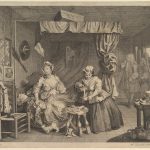 This lecture examines Hogarth’s Marriage à la Mode and other ‘modern moral subjects’. It looks at how the artist used his work to wage war against London’s sex trade and child poverty as part of his personal crusade to establish modern urban life as an appropriate subject for high art. Insights into the darker side of life in 18th century London are blended with the story of how Hogarth worked his way up from an apprenticed engraver to successful painter and philanthropist.
This lecture examines Hogarth’s Marriage à la Mode and other ‘modern moral subjects’. It looks at how the artist used his work to wage war against London’s sex trade and child poverty as part of his personal crusade to establish modern urban life as an appropriate subject for high art. Insights into the darker side of life in 18th century London are blended with the story of how Hogarth worked his way up from an apprenticed engraver to successful painter and philanthropist.
 Lecturer: Julia Musgrave got her first degree in Chemical Engineering and went on to become a Chartered Information Systems Engineer and IT project manager. In 2008 she decided that life was too short for just one career and decided to become an art historian. She now has a Graduate Diploma in the History of Art from the Courtauld Institute of Art and an MLitt in ‘Art, Style and Design: Renaissance to Modernism, c.1450 – c.1930’ from the University of Glasgow. She is currently working towards her Ph.D. at the University of York where she is researching the involvement of Roger Fry and the Bloomsbury Group in the development of the Contemporary Art Society from 1910 to 1937. She is a lecturer in Art History at the City Literary Institute (City Lit)
Lecturer: Julia Musgrave got her first degree in Chemical Engineering and went on to become a Chartered Information Systems Engineer and IT project manager. In 2008 she decided that life was too short for just one career and decided to become an art historian. She now has a Graduate Diploma in the History of Art from the Courtauld Institute of Art and an MLitt in ‘Art, Style and Design: Renaissance to Modernism, c.1450 – c.1930’ from the University of Glasgow. She is currently working towards her Ph.D. at the University of York where she is researching the involvement of Roger Fry and the Bloomsbury Group in the development of the Contemporary Art Society from 1910 to 1937. She is a lecturer in Art History at the City Literary Institute (City Lit)
12 February 2020 – “Through a glass darkly”: a study of glass through the eyes of the artist
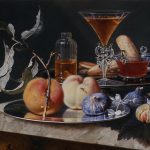 This lecture explores the way in which artists over the centuries have included transparent glass objects in their paintings, taking huge delight in capturing the shadows and reflections seen within the glass as well as displaying their skill in portraying what lies behind and beyond. It will include the remarkable depiction of glass objects in Roman wall-paintings, works by artists such as Titian, Veronese and Caravaggio – where both the Gods of Olympus and the disciples are seen drinking out of fragile Venetian cristallo – and the proliferation of glass drinking vessels in Dutch still-life paintings.
This lecture explores the way in which artists over the centuries have included transparent glass objects in their paintings, taking huge delight in capturing the shadows and reflections seen within the glass as well as displaying their skill in portraying what lies behind and beyond. It will include the remarkable depiction of glass objects in Roman wall-paintings, works by artists such as Titian, Veronese and Caravaggio – where both the Gods of Olympus and the disciples are seen drinking out of fragile Venetian cristallo – and the proliferation of glass drinking vessels in Dutch still-life paintings.
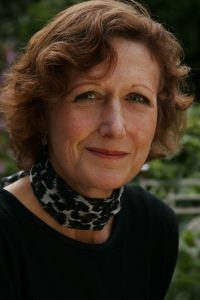 Lecturer: Jane Gardiner has an MA in History of Art from the University of London. She trained at the V&A and continues to lecture there. She was Senior Lecturer at Sotheby’s Institute of Art for 17 years, becoming a Deputy Director of Sotheby’s, UK. She has also lectured for the National Trust, the Art Fund, London University, Buckingham University, l’Institut d’Etudes Superieures des Arts in Paris, a private women’s college in Saudi Arabia, on cruise ships and at antiques fairs and interior design conferences in America.
Lecturer: Jane Gardiner has an MA in History of Art from the University of London. She trained at the V&A and continues to lecture there. She was Senior Lecturer at Sotheby’s Institute of Art for 17 years, becoming a Deputy Director of Sotheby’s, UK. She has also lectured for the National Trust, the Art Fund, London University, Buckingham University, l’Institut d’Etudes Superieures des Arts in Paris, a private women’s college in Saudi Arabia, on cruise ships and at antiques fairs and interior design conferences in America.
11 March 2020 – Heaven on earth: the art of Byzantine Commonwealth
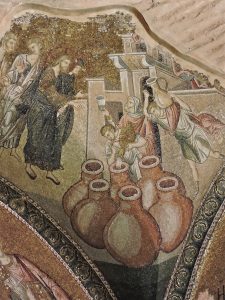 This lecture looks at the main characteristics of the art of the Orthodox church from the time when Constantinople was established as the capital of the Eastern Roman – and Christian – Empire in the 4th Century AD until its fall to the Ottoman Turks in 1453, and beyond. It concentrates on the areas and countries which became part of what has been described as the Byzantine Commonwealth, including Ravenna, Greece, Bulgaria and Romania, as well as Constantinople itself, the source and model for the Orthodox church everywhere. But the main emphasis will be on the architecture of some selected churches, icons and frescoes, to explain the spiritual and religious messages and meanings that they convey.
This lecture looks at the main characteristics of the art of the Orthodox church from the time when Constantinople was established as the capital of the Eastern Roman – and Christian – Empire in the 4th Century AD until its fall to the Ottoman Turks in 1453, and beyond. It concentrates on the areas and countries which became part of what has been described as the Byzantine Commonwealth, including Ravenna, Greece, Bulgaria and Romania, as well as Constantinople itself, the source and model for the Orthodox church everywhere. But the main emphasis will be on the architecture of some selected churches, icons and frescoes, to explain the spiritual and religious messages and meanings that they convey.
 Lecturer: John Osborne graduated in Classics at Cambridge University and taught classical subjects for over 30 years at Marlborough College, where he was Senior Master. He worked for several years for the British Council in Iran and Turkey, which gave him a long-standing interest in Islamic culture. He has lectured regularly for The Arts Society since 2005, at home and abroad, has lectured on Ancient Rome and on Islam at the University of Bath, runs an annual course on Mediaeval Parish Churches at Marlborough College Summer School, and guides at Salisbury Cathedral.
Lecturer: John Osborne graduated in Classics at Cambridge University and taught classical subjects for over 30 years at Marlborough College, where he was Senior Master. He worked for several years for the British Council in Iran and Turkey, which gave him a long-standing interest in Islamic culture. He has lectured regularly for The Arts Society since 2005, at home and abroad, has lectured on Ancient Rome and on Islam at the University of Bath, runs an annual course on Mediaeval Parish Churches at Marlborough College Summer School, and guides at Salisbury Cathedral.
He leads and lectures on specialist tours and cruises to various countries in SE Europe, the Mediterranean and the Middle East. He has taken groups to Turkey, Greece, Italy, Georgia, Croatia, Romania and (especially) Bulgaria, where he runs his own cultural and historical tours. John and his wife, Karen, have led over a dozen highly successful tours to Iran in recent years. Plans are in hand for tours, including ones for members of the Arts Society, to Bulgaria, Romania and Iran.
8 April 2020 – The empty chair from Van Gogh to Ai Weiwei
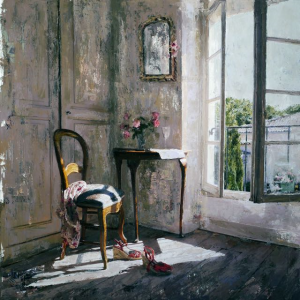 We all use chairs! But over the past 150 years, artists across the world have been using the humble chair as a conduit for profound ideas on themes from protest, absence and memory to domestic or everyday life. In Germany, Anselm Kiefer and Joseph Beuys used empty chairs to draw attention to their nation’s past, while Gerhard Richter used them to explore the mundane. In a conceptual piece, the American artist, Joseph Kosuth, juxtaposed 3 versions of chair to question what “chair” actually is. The Palestinian artist, Mona Hatoum, adapted chairs to explore female identity and the Columbian artist, Doris Salcedo, stacked 1,550 between two buildings to address migration and displacement. These are just some of the many diverse artists and uses of chairs that will be considered in this talk. As in all Angela Findlay’s lectures, her personal connection, as an artist who has worked with chairs throughout her career, will aim to bring the subject alive.
We all use chairs! But over the past 150 years, artists across the world have been using the humble chair as a conduit for profound ideas on themes from protest, absence and memory to domestic or everyday life. In Germany, Anselm Kiefer and Joseph Beuys used empty chairs to draw attention to their nation’s past, while Gerhard Richter used them to explore the mundane. In a conceptual piece, the American artist, Joseph Kosuth, juxtaposed 3 versions of chair to question what “chair” actually is. The Palestinian artist, Mona Hatoum, adapted chairs to explore female identity and the Columbian artist, Doris Salcedo, stacked 1,550 between two buildings to address migration and displacement. These are just some of the many diverse artists and uses of chairs that will be considered in this talk. As in all Angela Findlay’s lectures, her personal connection, as an artist who has worked with chairs throughout her career, will aim to bring the subject alive.
 Lecturer: Angela Findlay is a professional artist, writer and freelance lecturer with a long-standing interest in the role the arts and the creative process can play in bringing about changes, on a personal level or within societies. Her long career of teaching art in prisons and Young Offender Institutions in Germany and England, followed by her role as the former Arts Coordinator of the Koestler Trust in London, gave her many insights into the huge impact the arts can have in terms of rehabilitation. She is currently advising the Ministry of Justice and presenting the case for the arts to be included in their new rehabilitation and education policies.
Lecturer: Angela Findlay is a professional artist, writer and freelance lecturer with a long-standing interest in the role the arts and the creative process can play in bringing about changes, on a personal level or within societies. Her long career of teaching art in prisons and Young Offender Institutions in Germany and England, followed by her role as the former Arts Coordinator of the Koestler Trust in London, gave her many insights into the huge impact the arts can have in terms of rehabilitation. She is currently advising the Ministry of Justice and presenting the case for the arts to be included in their new rehabilitation and education policies.
In the past decade Angela’s Anglo-German roots led her to discover and research Germany’s largely unknown but fascinating post-WWII process of remembrance. So completely different to the British one, the arts once again play a huge and vital role in expressing the apology and atonement that underlies the country’s unique culture of memorials and counter memorials.
Angela has a BA(Hons) in Fine Art, a Diploma in Artistic Therapy (specialising in colour) and her paintings are widely exhibited both nationally and internationally.
29 April 2020 – TASO 10th Anniversary lecture
Art of the River Thames – through artists’ eyes
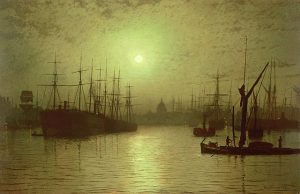 The River Thames has inspired artists for over three hundred years and continues to do so today. Discover a selection of artists from the historical to the contemporary, and experience their fascinating views of the river and interpretations of its eventful history.
The River Thames has inspired artists for over three hundred years and continues to do so today. Discover a selection of artists from the historical to the contemporary, and experience their fascinating views of the river and interpretations of its eventful history.
This event will be held at the Mathematical Institute (where we hold AGM). It will be a ticketed event and the lecture will be followed by a drinks reception.
Lecturer: Alexandra Epps is an official guide and lecturer at Tate Modern, Tate Britain and the Guildhall Art Gallery, and a lecturer at Pallant House Gallery. She is a qualified guide to the City of London, offering lectures and walks about many aspects of the arts for societies, corporations and private individuals, a Member of the City of London Guide Lecturers Association and co-author of the book Lord Mayor’s Portraits 1983-2014 (published 2015). Alexandra’s background is in design, having practised as a graphic designer running her own design consultancy for many years. She has a BA from Saint Martins School of Art and an MA from the London College of Printing..
13 May 2020 – A child of six could do it! Cartoonists and modern art
Modern art is often considered difficult, but it is much less so when seen through the eyes of some of the greatest cartoonists of the last one hundred and fifty years, who provide a humorous and sceptical but instructive guide to modern art from Courbet to the Britart of the 1990s. A chance to enjoy the insights and cartoons of (among others) Daumier, Larry, Thelwell, Matt, the wise guys at the New Yorker magazine and, of course, the immortal Giles. Collectively, they provide an absorbing, illuminating and, above all, a funny, revealing and sidelong view of 150 years of modern art.
 Lecturer: Barry Venning is an historian of British art with a particular interest in the work of JMW Turner, on whom he has published widely, including the volume on Turner in Phaidon’s Art & Ideas series, and several catalogue essays for exhibitions in the UK, Germany, Italy and Poland. He was the BBC’s script consultant on Turner’s Fighting Temeraire and has taken part (2013) in a BBC documentary called The Genius of Turner: Painting the Industrial Revolution. He has also published a study of John Constable’s paintings. His interests and his teaching extend from medieval architecture to contemporary British art. He is currently Associate Lecturer with the Open University and lecturing on a freelance basis for The Arts Society, Christie’s Education and other organisations.
Lecturer: Barry Venning is an historian of British art with a particular interest in the work of JMW Turner, on whom he has published widely, including the volume on Turner in Phaidon’s Art & Ideas series, and several catalogue essays for exhibitions in the UK, Germany, Italy and Poland. He was the BBC’s script consultant on Turner’s Fighting Temeraire and has taken part (2013) in a BBC documentary called The Genius of Turner: Painting the Industrial Revolution. He has also published a study of John Constable’s paintings. His interests and his teaching extend from medieval architecture to contemporary British art. He is currently Associate Lecturer with the Open University and lecturing on a freelance basis for The Arts Society, Christie’s Education and other organisations.
10 June 2020 – Pots and frocks – the world of Grayson Perry
Widely known for his outlandish appearances dressed as his feminine alter ego, Claire, Grayson Perry is now a core part of the art establishment. A Turner Prize winner, Royal Academician, popular broadcaster and colourful character, he’s possibly one of the world’s best known contemporary artists. His works of ceramics, textiles, tapestries and prints are highly sought after. Often controversial, he tackles difficult subjects in a poignant yet witty way and holds a mirror up to society. This talk will examine Grayson Perry’s works, his exciting and thought-provoking exhibitions, and the unique character inside the flamboyant frocks.
 Lecturer: Ian Swankie is a Londoner with a passion for art and architecture. He is an official guide at Tate Modern, Tate Britain, Guildhall Art Gallery and St Paul’s Cathedral, and gives tours at each venue. He is also a qualified and active freelance London guide and leads regular tours for various corporations and organisations.a member of both the City of London and Westminster Guide Lecturer Associations. Six years ago, he established a weekly independent art lecture group in his home town of Richmond in West London, and he gives talks on a variety of subjects. He is an accredited lecturer for The Arts Society, and a Freeman of the Worshipful Company of Art Scholars.
Lecturer: Ian Swankie is a Londoner with a passion for art and architecture. He is an official guide at Tate Modern, Tate Britain, Guildhall Art Gallery and St Paul’s Cathedral, and gives tours at each venue. He is also a qualified and active freelance London guide and leads regular tours for various corporations and organisations.a member of both the City of London and Westminster Guide Lecturer Associations. Six years ago, he established a weekly independent art lecture group in his home town of Richmond in West London, and he gives talks on a variety of subjects. He is an accredited lecturer for The Arts Society, and a Freeman of the Worshipful Company of Art Scholars.
17 September 2020 (Thurs) – AGM + Lecture
Details to be finalised.

